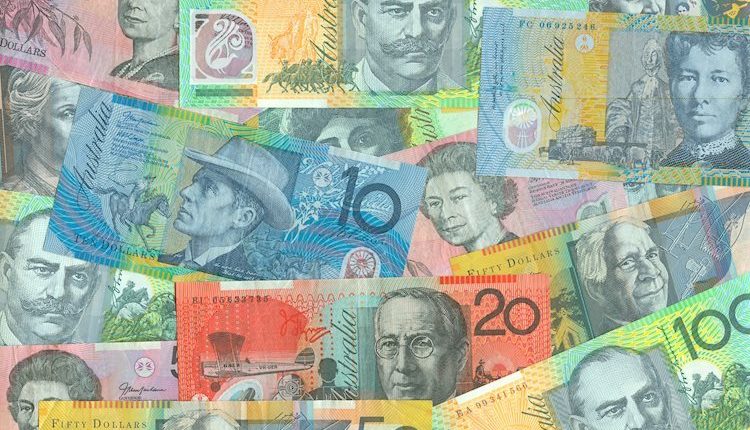- The Australian Dollar attracts some sellers in Friday’s Asian session.
- Discouraging GDP number sparks the RBA rate cut bets, weighing on the Aussie.
- The US Nonfarm Payrolls report will take center stage on Friday.
The Australian Dollar (AUD) edges lower on Friday. Disappointing economic growth could prompt the Reserve Bank of Australia (RBA) to adopt a more dovish tone at next week’s monetary policy meeting, potentially setting up a February rate cut. This, in turn, exerts some selling pressure on the Aussie.
Traders will closely monitor the US November employment report, including Nonfarm Payrolls (NFP), Unemployment Rate and Average Hourly Earnings. The US economy is expected to see 200,000 jobs added in November after rising by 12,000 in October. In case of weaker than estimated outcome, this could drag the Greenback lower and create a tailwind for AUD/USD.
Australian Dollar loses traction amid uncertainties
- A Reuters poll of 44 economists showed the RBA is expected to keep the cash rate unchanged at 4.35% in the next meeting and see the RBA cut rate by 25 bps to 4.10% in Q2 2025 (vs Q1 in the November poll).
- Australia’s GDP expanded 0.3% QoQ in the three months through September, compared with the 0.2% growth in the second quarter. This reading was below the market consensus of 0.4%.
- The US weekly Initial Jobless Claims rose 9,000 to 224,000 for the week ending November 29, according to the US Department of Labor (DoL) on Thursday. This reading came in above initial estimates and higher than the previous week’s 215,000.
- Continuing Jobless Claims went down by 23K to 1.871M for the week ending November 22.
- The Fed Chair Jerome Powell stated on Wednesday that the US economy is stronger now than the US central bank had expected in September when it began reducing interest rates, which means the US central bank can show some restraint in cutting interest rates.
AUD/USD’s bearish bias remains unchanged in the longer term
The Australian Dollar trades weaker on the day. The AUD/USD pair keeps the bearish vibe on the daily chart as the price is below the key 100-day Exponential Moving Average (EMA). The 14-day Relative Strength Index (RSI) is located below the 50-midline near 38.85, indicating bearish momentum. This suggests that the path of least resistance is to the downside.
The potential support level emerges at 0.6300, representing the lower limit of the descending trend channel and psychological level. Bearish candlesticks below this level could draw in more sellers to 0.6285, the low of October 3, 2023.
Sustained bullish momentum above the upper boundary of the trend channel of 0.6500 could see a rally to 0.6615, the 100-day EMA. A decisive break above the mentioned level could expose 0.6687, the high of November 7.
Australian Dollar FAQs
One of the most significant factors for the Australian Dollar (AUD) is the level of interest rates set by the Reserve Bank of Australia (RBA). Because Australia is a resource-rich country another key driver is the price of its biggest export, Iron Ore. The health of the Chinese economy, its largest trading partner, is a factor, as well as inflation in Australia, its growth rate and Trade Balance. Market sentiment – whether investors are taking on more risky assets (risk-on) or seeking safe-havens (risk-off) – is also a factor, with risk-on positive for AUD.
The Reserve Bank of Australia (RBA) influences the Australian Dollar (AUD) by setting the level of interest rates that Australian banks can lend to each other. This influences the level of interest rates in the economy as a whole. The main goal of the RBA is to maintain a stable inflation rate of 2-3% by adjusting interest rates up or down. Relatively high interest rates compared to other major central banks support the AUD, and the opposite for relatively low. The RBA can also use quantitative easing and tightening to influence credit conditions, with the former AUD-negative and the latter AUD-positive.
China is Australia’s largest trading partner so the health of the Chinese economy is a major influence on the value of the Australian Dollar (AUD). When the Chinese economy is doing well it purchases more raw materials, goods and services from Australia, lifting demand for the AUD, and pushing up its value. The opposite is the case when the Chinese economy is not growing as fast as expected. Positive or negative surprises in Chinese growth data, therefore, often have a direct impact on the Australian Dollar and its pairs.
Iron Ore is Australia’s largest export, accounting for $118 billion a year according to data from 2021, with China as its primary destination. The price of Iron Ore, therefore, can be a driver of the Australian Dollar. Generally, if the price of Iron Ore rises, AUD also goes up, as aggregate demand for the currency increases. The opposite is the case if the price of Iron Ore falls. Higher Iron Ore prices also tend to result in a greater likelihood of a positive Trade Balance for Australia, which is also positive of the AUD.
The Trade Balance, which is the difference between what a country earns from its exports versus what it pays for its imports, is another factor that can influence the value of the Australian Dollar. If Australia produces highly sought after exports, then its currency will gain in value purely from the surplus demand created from foreign buyers seeking to purchase its exports versus what it spends to purchase imports. Therefore, a positive net Trade Balance strengthens the AUD, with the opposite effect if the Trade Balance is negative.
Read the full article here

